Welcome to Paging Earth, a climate communications blog dedicated to demystifying, depolarizing, and educating the public about climate science and climate action.
Scientists aren’t the best at translating jargon, and politicians are great at spinning facts. Enter the climate communicator, playing a key role in educating the public on climate change issues. We at Paging Earth are here to help make sense of the science, and to break down the most effective ways to talk climate. Let’s get to work.
Climate change is happening. And yet, discussion about climate change and how to tackle it is more politicized and fiery than ever. If we truly want to preserve our planet and the delicate ecosystems on it, we must learn how to discuss climate change in a productive way. Here’s how to talk about it.
Climate change is happening. Here’s how to talk about it.
Laying the Groundwork
Traditionally, climate change and climate science has been presented in the media and in many school systems around the world (when taught), as fairly new and clouded in debate. But really, the scientific foundations identifying the heat trapping properties of our atmosphere were laid down nearly 200 years ago.
Recognizing the long history of scientific findings and political efforts surrounding climate change is essential for putting the magnitude of the global climate crisis in perspective.
Here is a timeline of the most significant developments in climate change research and policy to get us all on the same page:
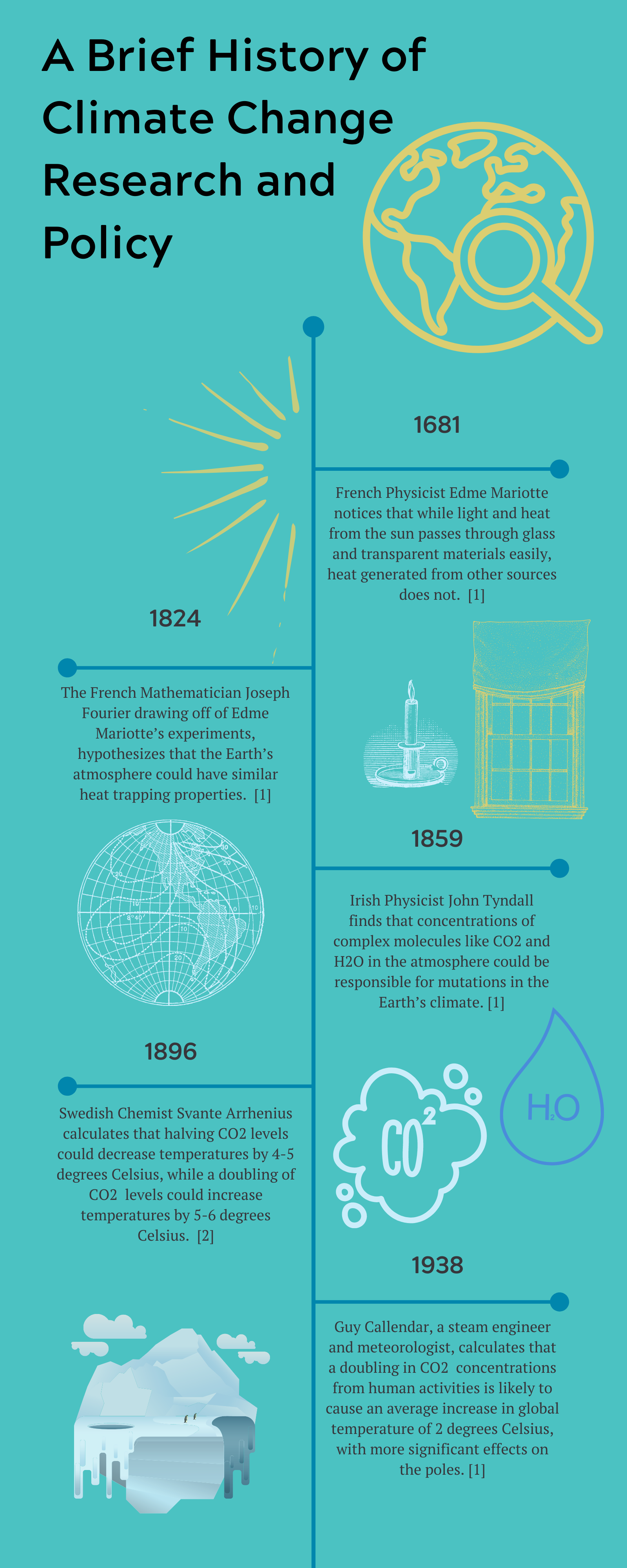
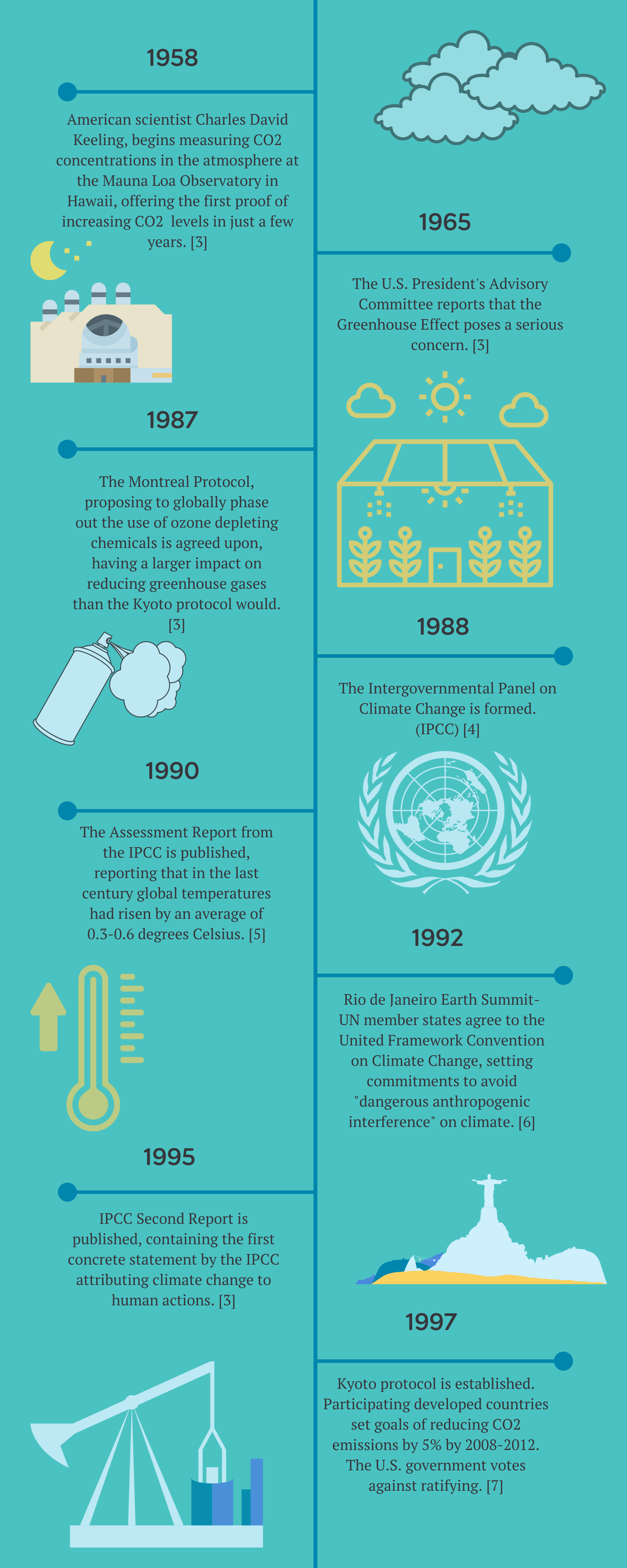
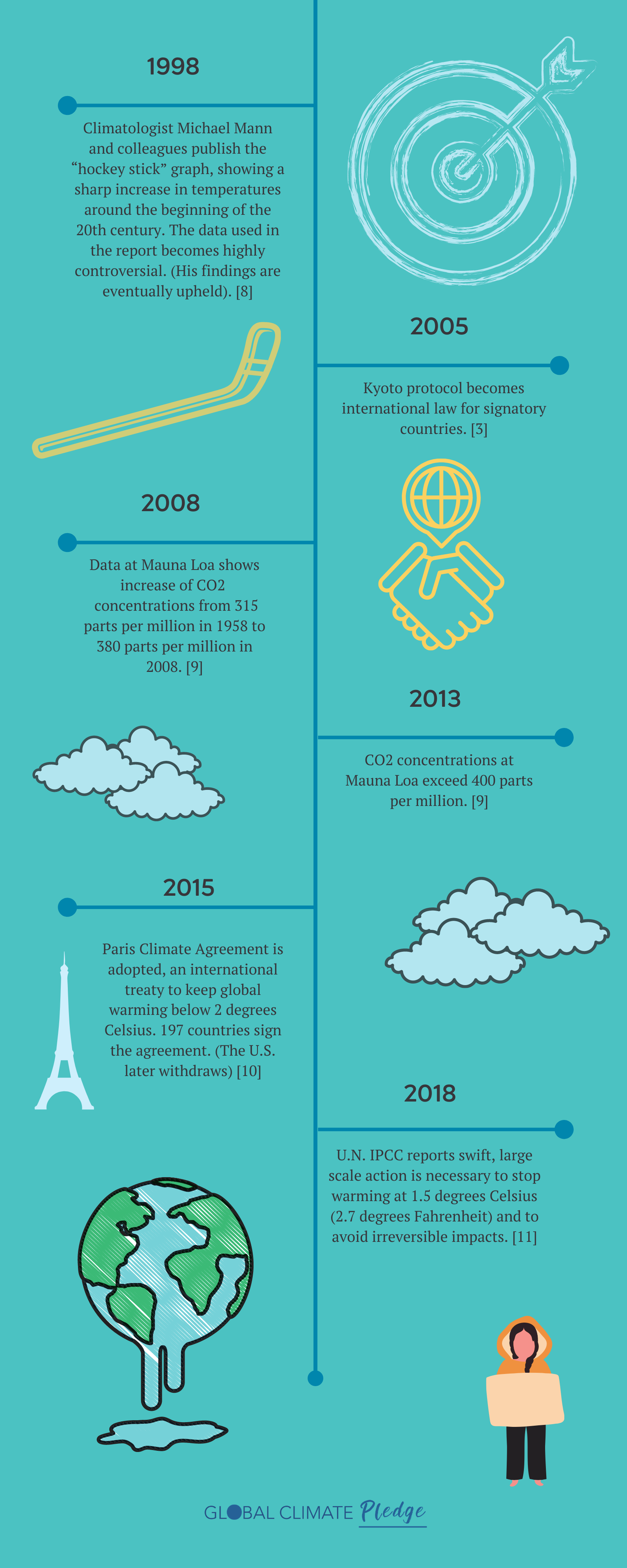
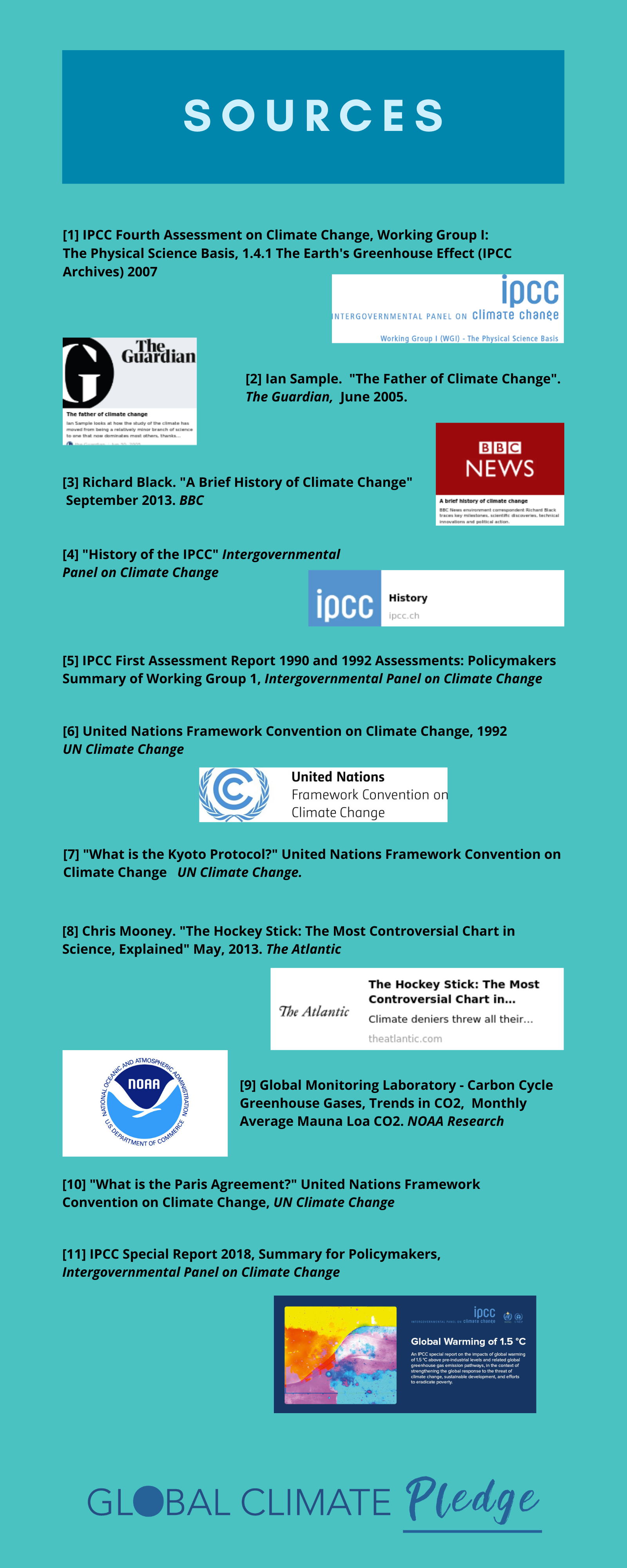
We Are Here
We’ve known climate change is happening for over a century — we’ve had definitive proof of rising CO2 levels since the early 1960s. Yet as a planet, we have not been able to mobilize the kind of global action that is necessary to combat it. Now, scientists are warning that we are running out of time, that we have about a decade left to act in order to avoid irreversible impacts.
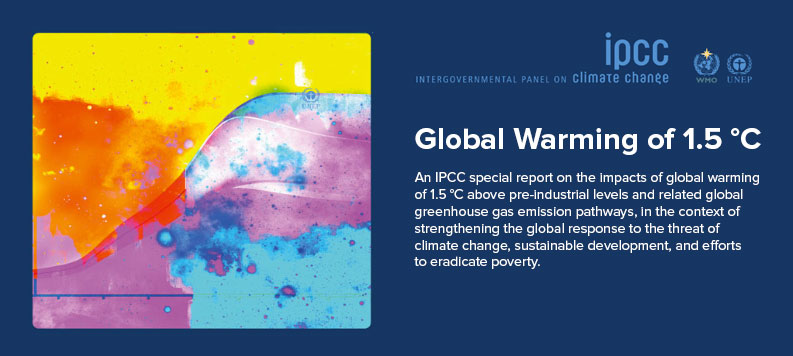
Scientists are calling for large scale action. The 2018 IPCC special report summary for policymakers states that reducing future climate change impacts will require “upscaling and acceleration of far-reaching, multilevel and cross-sectoral climate mitigation and by both incremental and transformational adaptation.” But what does this action look like?
It looks like teamwork: scientists, policy makers, governments, the general public, all working together to stabilize the climate and make the world more livable. Putting private interests aside, focusing on the good of the whole, and holding each other accountable. From the role of the climate communicator, it requires engaging and educating the global population to inspire change.
Reducing future climate change impacts will require “upscaling and acceleration of far-reaching, multilevel and cross-sectoral climate mitigation and by both incremental and transformational adaptation”
2018 IPCC Special Report
As it stands, governments around the world — especially the biggest greenhouse gas emitters, we’re looking at you developed nations — have failed to take the necessary action to curb their emissions. We’ve formed international panels and agreements, but the efforts made to achieve the goals set forth by these meetings have been half-hearted at best.

As communicators, we must understand why we are not taking the large scale climate action required of us, and refocus accordingly. So, where do we go from here?
Climate Action is Essential to Well-being
In a study involving 33 countries, researchers found that a country’s wealth generally influences how educated its citizens are about climate change, and how strongly they perceive the threat of climate change. While wealthier nations have more knowledge about climate change and tend to view climate change as a higher priority issue, at the same time they associate less danger with climate change than nations with lower GDP per individual. Richer countries are still concerned, but they feel a level of protection or distance against the worst effects of climate change.
With increased wealth, comes an increased ability to adapt to changes in the environment. However, wealth also brings a perception of safety that could reduce motivation and slow climate action. This is concerning because wealthier countries have the greatest means to enact strong climate policies.
Meanwhile, low-income countries are significantly more vulnerable to the impacts of climate change. They are more sensitive to price changes for goods, and have less resources to adapt to changes in their environment such as natural disasters.
Low-income countries are significantly more vulnerable to the impacts of climate change.
Between 1998 and 2017, high income and upper-high income countries lost around 0.41% to 0.60% of national GDP to climate change damage respectively, while lower-middle income and low income countries lost 1.14% and 1.77% of their GDP to climate change disasters.
In addition to natural disasters, physicians are also recognizing the health and wellness implications of climate change from air particulate pollution and psychological stress, to political instability, conflict, and forced migration. As climate communicators, we need to get the message through that climate action is a public health and safety issue.
We need to walk the line of presenting climate change as a serious threat to well-being — to our ability to live in certain regions, to growing food, and for future generations to thrive — while not spreading doom and gloom to the point that it is immobilizing. Delivering urgency is crucial, but so is presenting hope and strong paths forward.
Utilize Social Media, Spread Facts
Social media can be a very powerful tool for reaching and educating people, if used correctly. One example of a highly successful platform is Intersectional Environmentalist on Instagram. The organization posts clean, eye catching graphics, often with short but poignant messages, or educational graphics with information broken up over multiple slides. The material is designed to be shared, and easily digestible.

By nature, social media content has extremely rapid turnover. While the quick, viral nature of social media can be helpful in reaching large numbers of people, it can also mean that the circulation of information can fizzle out almost as fast as it catches on. Consistent posting by communicators is vital in pushing the movement forward and keeping the conversation going.
We are representing an environmental movement, and the pressure is on.
Moreover, information must stay credible. Backing up beautifully formatted Instagram slides with credible sources is a must, especially in an era of “fake news” and misinformation. When we share information about climate change, we are representing an environmental movement, and the pressure is on. Educational material on social media acts as a jumping off point for people to do further research, so providing sources is vital to avoid confusion, and encourage your audience to delve deeper.
It’s Time to get Personal
We can spread all the information in the world about climate change, but we will have little success in generating change if we don’t engage people on a personal level. Climate communicators need to tell stories that are relatable and empowering. Stories that demand an emotional reaction.
When people feel an emotional response to the climate crisis — particularly feelings like anger, anxiety, and hope — it makes them want to act, but they also need to feel like they can act. With the dark nature of climate change, it’s easy to feel helpless and overwhelmed. Instead we need to instill a sense of agency in people, to show them that they can help push the bigger change we need.
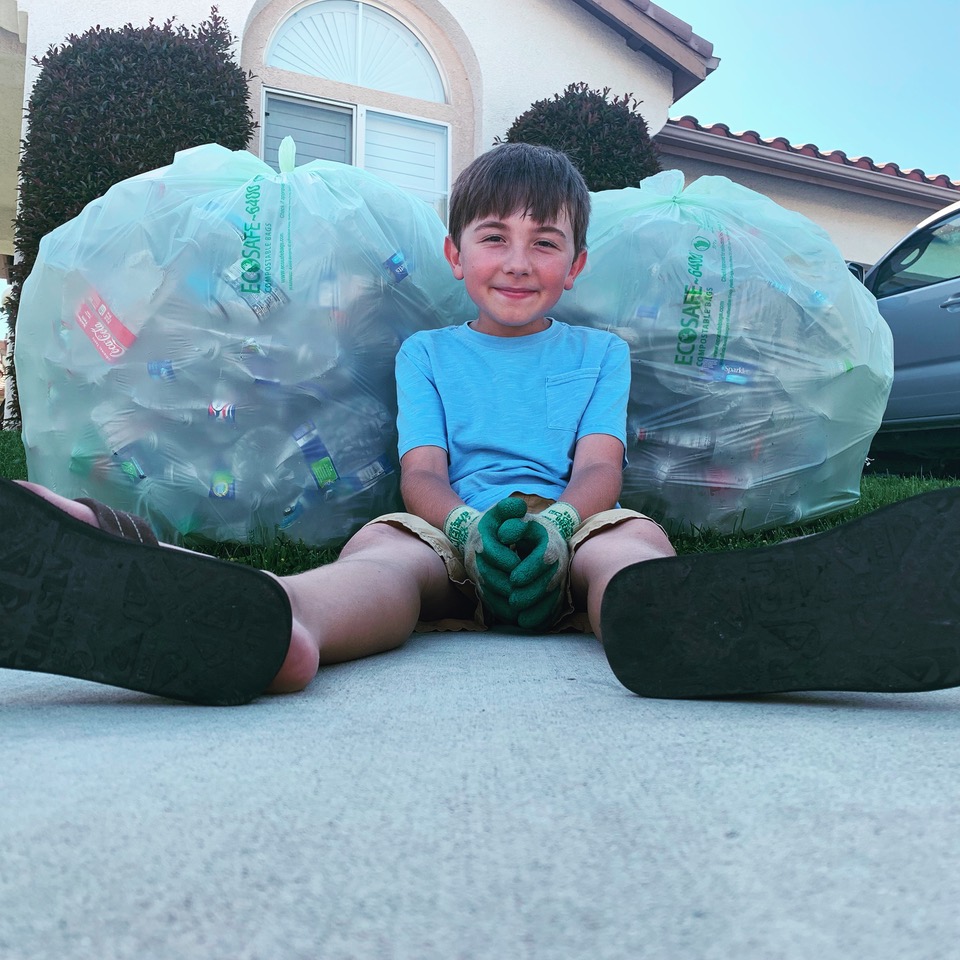
From a Kid with a Hobby to an Icon Saving the Seas: Ryan Hickman
Climate communicators need to tell stories that are relatable and empowering.
This is why we have joined the Global Climate Pledge and created this blog — to provide people with actions they can easily incorporate into their lives that are good for the environment, and inspire by sharing stories of individuals taking climate action all over the world.

To showcase what climate action is, the Global Climate Pledge blog features green heroes, ordinary people that recognized problems facing our environment, and figured out how they could make a positive difference. When sharing stories on our blog, one of our top priorities is to find stories that are relatable, and human. We want to highlight that there are many different ways to take climate action and that anyone in the world can be a climate activist.
Keep the Courage to Act, Don’t Lose Momentum
It’s difficult for us to conceptualize the urgency of climate change because it is such a complex scientific issue. Its progression is nonlinear. Changes can happen rapidly once tipping points are met, and specific changes can intensify others. We can identify events that will occur — such as major loss of global ice sheets, thawing permafrost, or coral reef bleaching — but we don’t know when we will hit the tipping points triggering these events. Once the tipping points are surpassed, there’s no going back. This is why we have to act now.
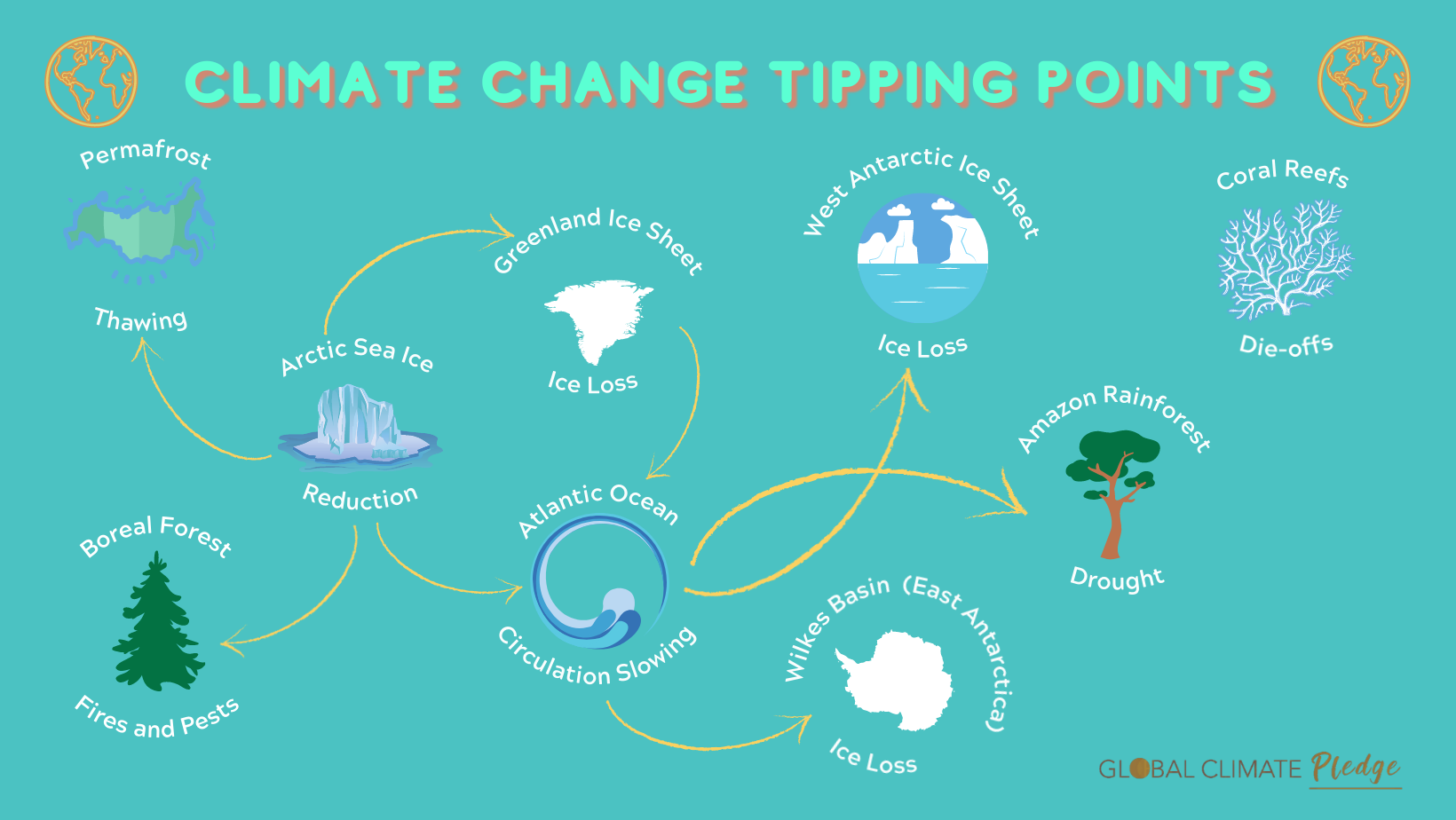
Environmentalist Bill McKibben says that our failure is due to a lack of inertia. Once we are set in our ways, it takes a lot of energy to rally people to change, especially when there are people that benefit from the way things are. As communicators, we need to ask ourselves: How can we not only ignite, but keep the spark in people?
We, as individuals, make a difference.
Of course, it is easier to do nothing. But we need to be courageous. We need to inspire this courage in others and demand change. We have to encourage both big and small steps — right now; it is all about action. Above all, it is our job to convince people that anyone can do something. We, as individuals, make a difference.
Communicators have and will continue to hold a large share of responsibility in how the public perceives climate change. In order to lead the way forward, it is imperative that we are sending the right message, in a way that reaches people, and accurately conveys the science. We know the road ahead is long and will be met with obstacles. But for our planet and for ourselves, we must keep moving, and we must not lose momentum.







